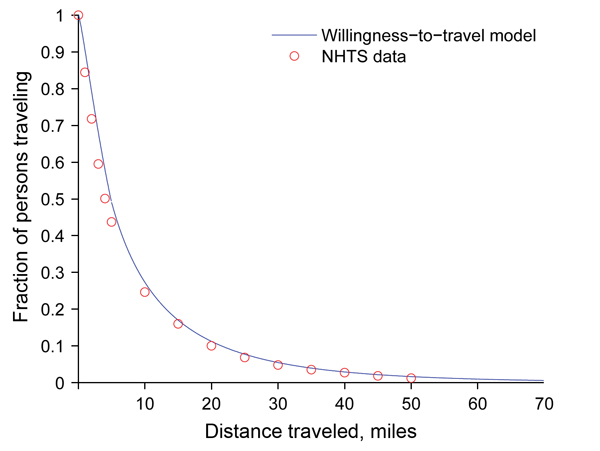Volume 21, Number 2—February 2015
Research
Optimizing Distribution of Pandemic Influenza Antiviral Drugs
Figure 1

Figure 1. Willingness-to-travel curve for receiving antiviral drugs during the 2009 influenza pandemic given by equation (2) (in Methods section) fit to National Household Travel Survey (NHTS) data on privately operated vehicle travel for the entire US underinsured population.
Page created: January 20, 2015
Page updated: January 20, 2015
Page reviewed: January 20, 2015
The conclusions, findings, and opinions expressed by authors contributing to this journal do not necessarily reflect the official position of the U.S. Department of Health and Human Services, the Public Health Service, the Centers for Disease Control and Prevention, or the authors' affiliated institutions. Use of trade names is for identification only and does not imply endorsement by any of the groups named above.